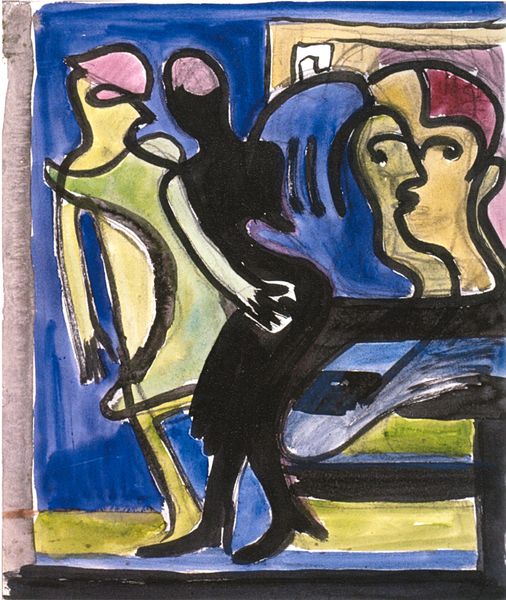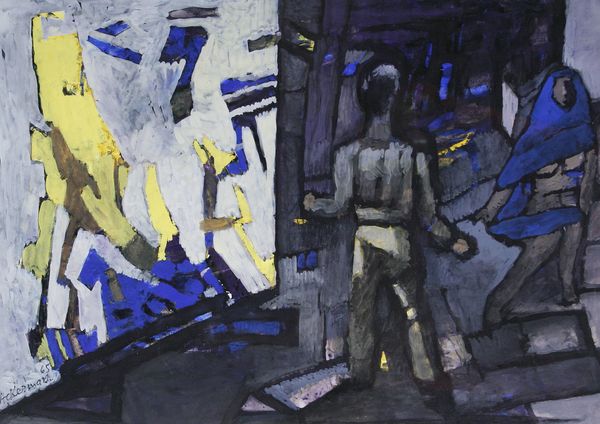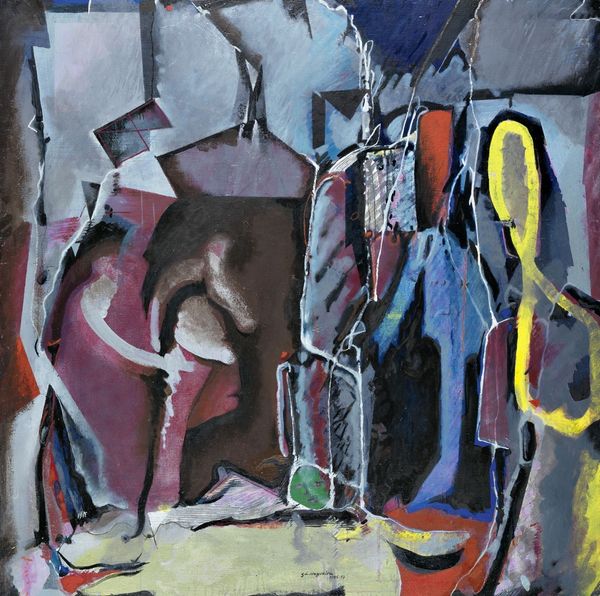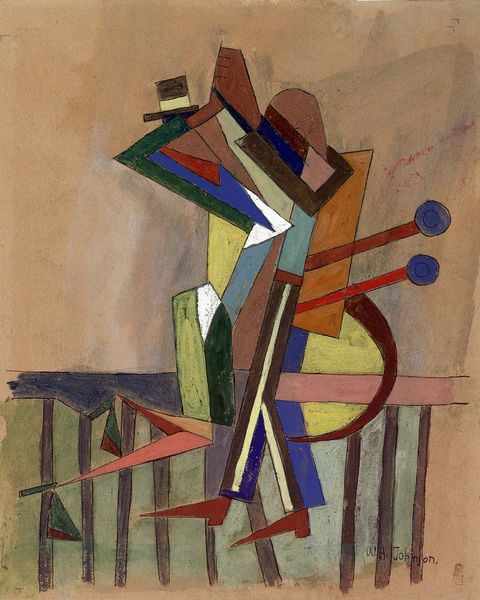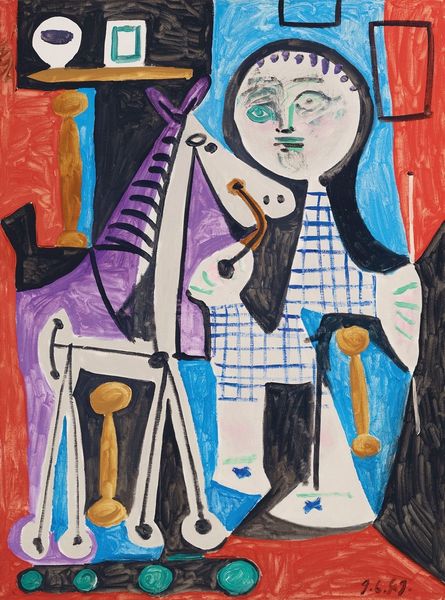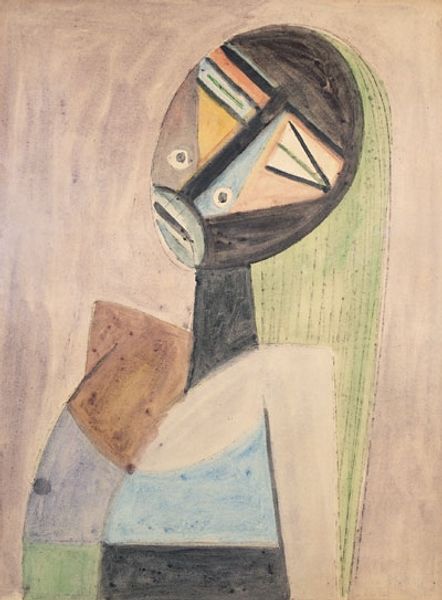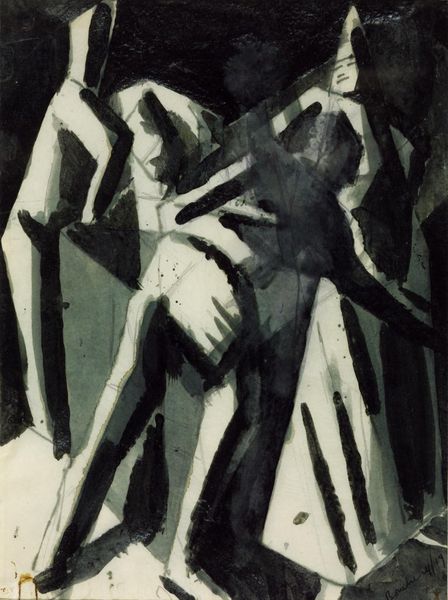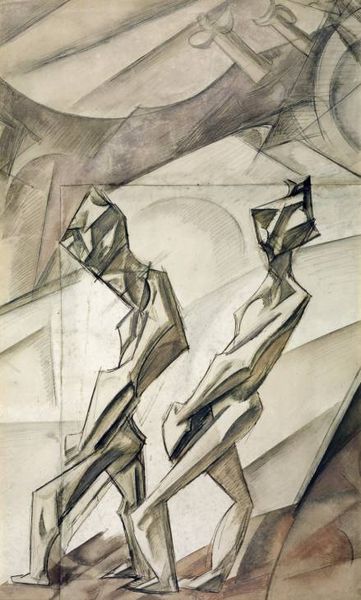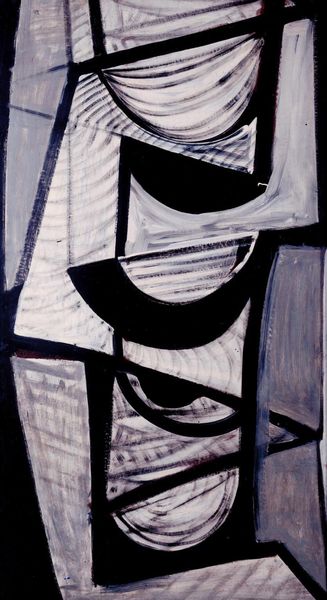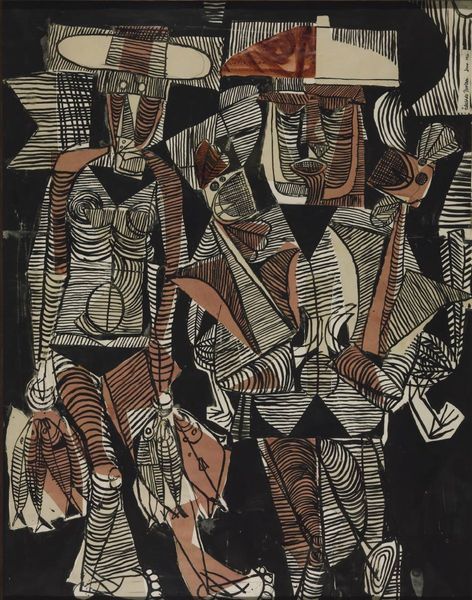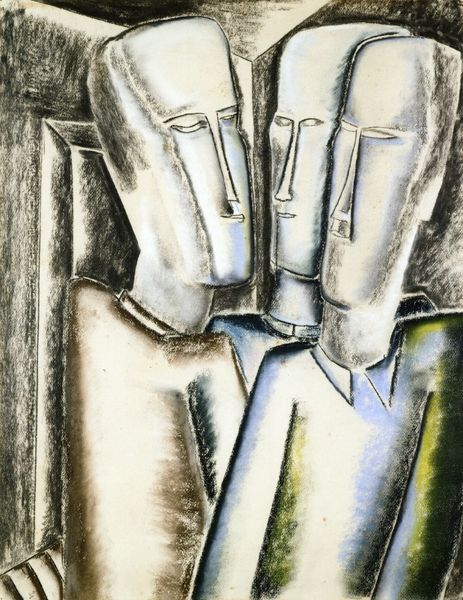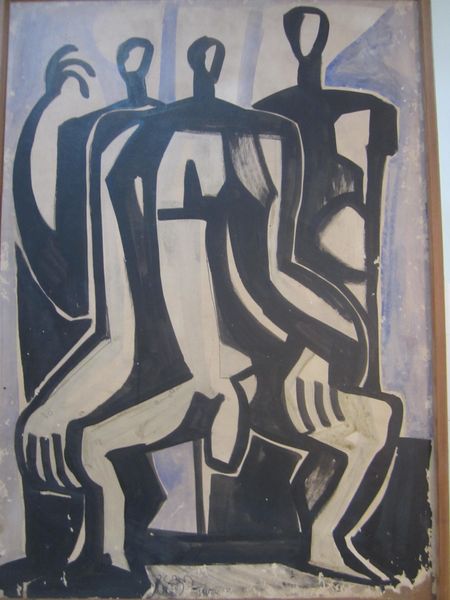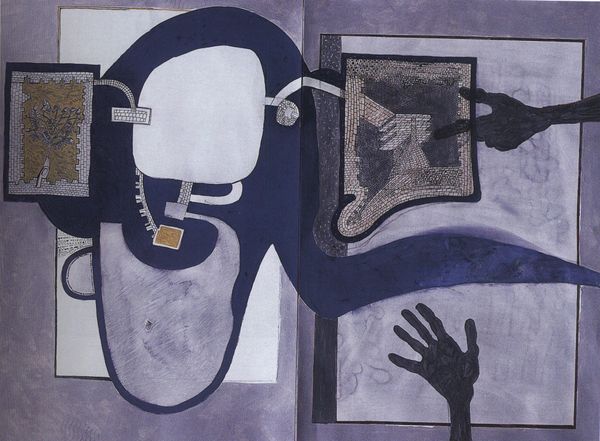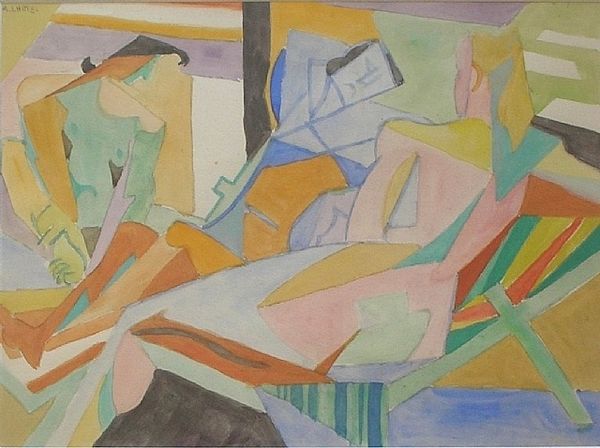
painting, watercolor
#
portrait
#
cubism
#
painting
#
figuration
#
watercolor
#
cityscape
#
watercolour illustration
Copyright: Public domain US
Curator: This is Ossip Zadkine's "Backstage at the Casino de Paris," created in 1921. It’s a watercolor painting, revealing a scene pulsing with the energy of the theater. Editor: My initial impression is of alienation and cool detachment. The figures, with their bluish skin, are isolated within the architectural framework, their postures stiff and somber. Curator: Precisely. Zadkine, deeply impacted by the First World War, employed Cubist techniques not merely for aesthetic exploration, but as a critique of modernity’s dehumanizing effect. Consider the sharp, fragmented planes that comprise the stage and figures. They evoke the fractured psyche and societal instability of the post-war era. The dancers, traditionally figures of grace and beauty, are here rendered as angular, almost robotic forms. Editor: The stage, that space of illusion, becomes a site of anxiety. It reminds me of stage designs from the Ballets Russes with that slightly menacing architectural constructivism. The performers are also stripped bare – not just literally backstage, but psychologically too. The dominant symbol of this watercolor might be exposure and vulnerability. Curator: I agree. Note also the racial undertones. Zadkine was a Russian-Jewish artist working in Paris during a time of considerable antisemitism and xenophobia. The obscured figures, particularly the one draped in what seems a striped dress or tutu, are suggestive of veiled identities within the dominant culture, hinting at the struggles for recognition and representation faced by marginalized communities in the dazzling but exclusive world of Parisian performance. Editor: The subdued palette heightens this sense of veiled experience. There’s a dream-like, unsettling quality here. Those icy blues contribute so much, and remind me how archetypal colour associations imprint on our emotional reactions. Curator: Yes, the palette and angular abstraction prompt a conversation regarding art and alienation and those that have historically felt disconnected. Thanks for walking through this painting with me! Editor: Thank you, my views broadened through our dialogue.
Comments
No comments
Be the first to comment and join the conversation on the ultimate creative platform.
